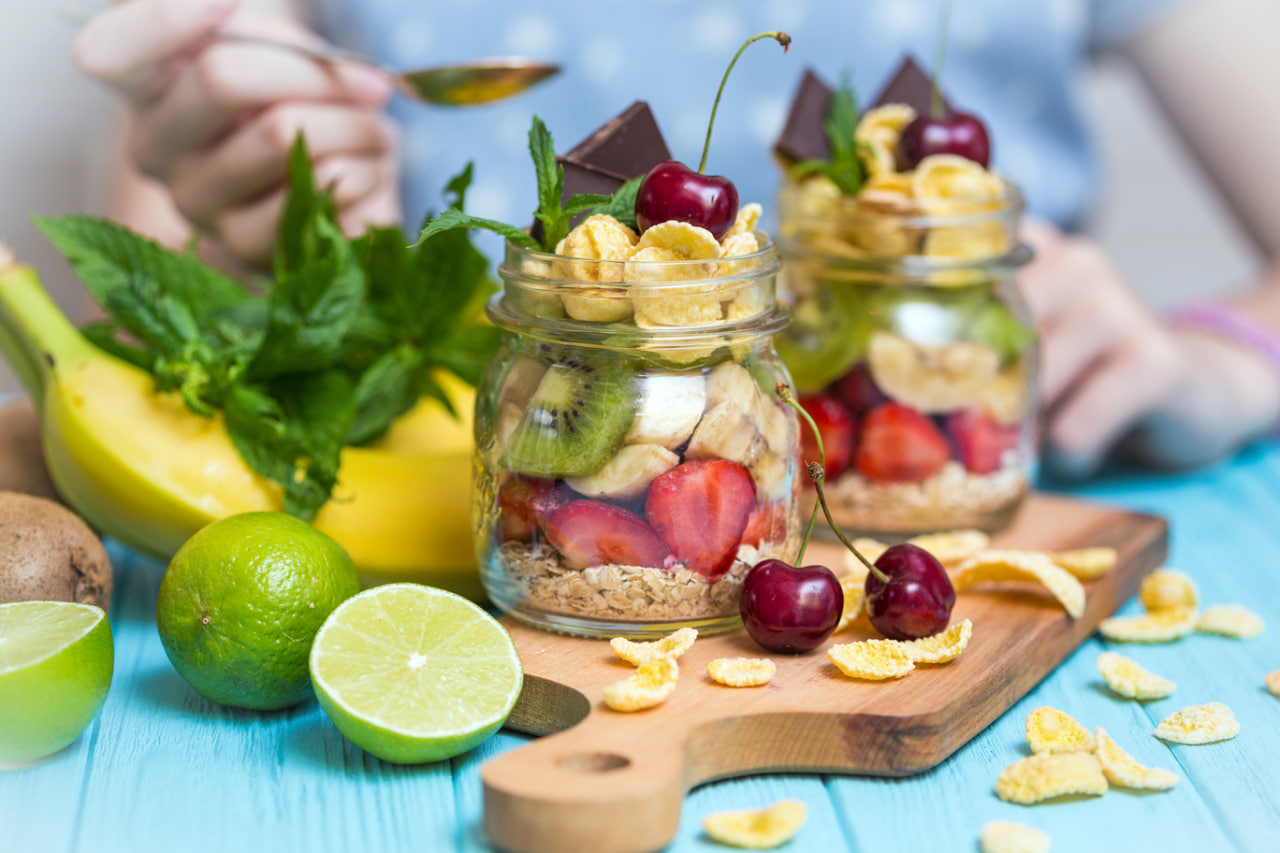Ingredients, Tools & Baking Techniques

Creating healthy and delicious desserts requires a solid understanding of ingredients, the right tools, and effective baking techniques. Each component plays a critical role in achieving balanced flavors, appealing textures, and visually pleasing results. By mastering these elements, bakers can consistently produce nutritious desserts that are both satisfying and impressive.
Choosing the Right Ingredients
Ingredients are the foundation of every dessert. High-quality, wholesome components ensure better flavor, texture, and nutritional value. Common staples include fruits, nuts, seeds, whole grains, natural sweeteners, and plant-based alternatives.
Fruits: Fresh, frozen, or dried fruits provide natural sweetness, fiber, and essential vitamins. Berries, bananas, apples, and citrus are versatile for both raw and baked desserts.
Nuts and Seeds: Almonds, walnuts, chia seeds, and flaxseeds add healthy fats, protein, and crunch. They can be used in crusts, fillings, toppings, or blended into batters.
Whole Grains: Oats, quinoa, and whole wheat flour give structure, texture, and slow-release energy while increasing fiber content.
Natural Sweeteners: Maple syrup, honey, agave, or dates reduce reliance on refined sugar while imparting rich flavor.
Plant-Based Alternatives: Ingredients like almond milk, coconut oil, or avocado replace heavier fats and dairy, creating creamy textures with lower saturated fat content.
Understanding ingredient properties is crucial. For example, ripe bananas add moisture and sweetness, while flaxseeds can act as a binding agent in vegan baking. Combining ingredients thoughtfully ensures optimal taste and texture.
Essential Tools for Baking
Using the right tools simplifies preparation, enhances precision, and ensures consistent results.
Basic Tools: Mixing bowls, measuring cups and spoons, spatulas, whisks, and baking trays are essential for any kitchen.
Blenders and Food Processors: Perfect for pureeing fruits, nuts, or vegetables, blending batters, or creating smooth fillings and frostings.
Ovens and Thermometers: Accurate temperature control is critical for even baking and achieving desired textures. Using an oven thermometer ensures precision.
Specialized Tools: Silicone molds, springform pans, piping bags, and decorating tools elevate presentation and allow for professional-quality desserts.
Small Accessories: Graters, zesters, rolling pins, and pastry brushes enhance texture, flavor, and appearance. Having tools suited to each technique reduces errors and improves efficiency.
Baking Techniques for Nutritious Desserts
Mastering baking techniques ensures desserts are delicious, healthy, and visually appealing.
Mixing Methods: Techniques like folding, creaming, and whisking influence texture and structure. For example, gentle folding preserves air in batters for lighter cakes, while creaming butter and sugar creates soft, tender crumb in muffins.
Temperature Control: Baking at precise temperatures ensures even cooking and prevents over-browning or drying. Some ingredients, like chocolate or coconut oil, require careful handling to maintain consistency.
Moisture Management: Ingredients like applesauce, yogurt, or mashed banana add moisture while reducing fat content. Proper balance prevents dryness and improves mouthfeel.
Leavening Techniques: Baking soda, baking powder, or yeast helps desserts rise without relying on chemical additives. Understanding how and when to incorporate leavening agents is key to achieving desired textures.
No-Bake Techniques: Many nutritious desserts, such as energy bites, raw bars, and chilled puddings, require minimal or no baking. These techniques preserve nutrient content and are excellent for quick, easy, and healthy treats.
Roasting and Toasting: Nuts, seeds, and whole grains can be lightly roasted to enhance flavor without additional fats. Roasting vegetables like pumpkin or sweet potato adds natural sweetness and depth to desserts.
Flavor and Texture Balance
Achieving balanced flavors and textures is crucial in healthy baking. Combining sweet, tart, and savory elements creates depth and complexity. Contrasting textures—crispy, creamy, chewy—make desserts more engaging.
Herbs, spices, citrus zest, and natural extracts enhance flavor naturally, reducing the need for added sugar. Experimenting with these elements helps create unique, memorable desserts that satisfy cravings without compromising nutrition.
Incorporating Creativity
Creativity is a vital part of healthy dessert-making. Mixing unusual ingredients, trying new techniques, and experimenting with presentation encourages innovation. Layered parfaits, decorative toppings, and alternative flours offer endless opportunities for customization.
Documenting experiments and reflecting on results allow bakers to refine recipes, improve flavor, and perfect techniques over time. Creative exploration transforms everyday ingredients into gourmet, nutritious desserts.
Tips for Consistency and Success
Consistent measurement, ingredient quality, and baking methods are essential for repeatable results. Preparing ingredients ahead of time, organizing tools, and following precise instructions reduce errors and improve efficiency.
Tasting and adjusting flavors as you go ensures balanced results, while taking notes helps refine recipes for future success. With practice and attention to detail, healthy baking becomes both intuitive and reliable.
Enhancing Presentation
The visual appeal of a dessert enhances the overall experience. Thoughtful plating, garnishes, layered textures, and color contrasts elevate simple recipes into memorable creations.
Edible flowers, fresh fruit slices, nuts, seeds, or a dusting of cocoa or cinnamon can transform the appearance of a dessert. Presentation adds another layer of creativity, making healthy desserts enjoyable not only to taste but also to admire.
Continuous Learning and Skill Development
Baking is an evolving skill. Learning new ingredients, tools, and techniques expands creative possibilities. Online tutorials, workshops, and experimentation provide opportunities for growth and refinement.



